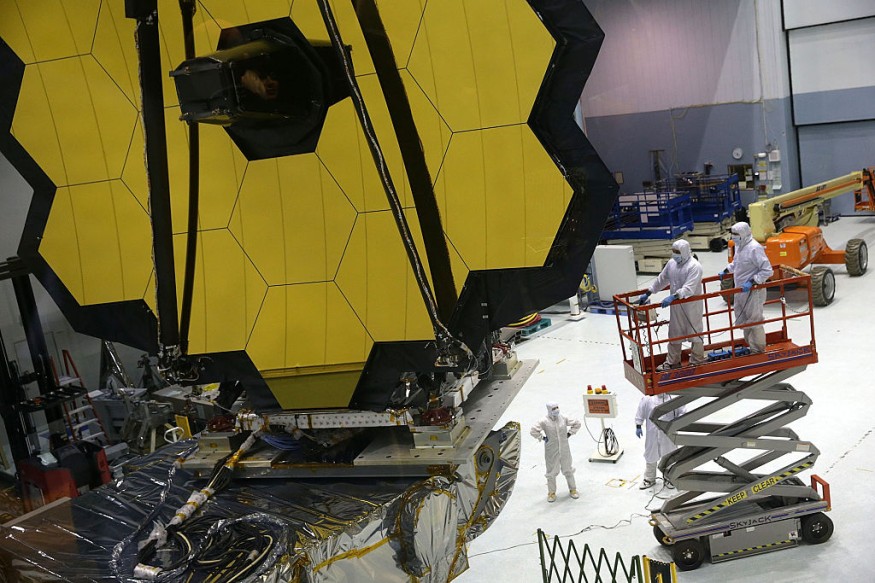On December 18, the world's most powerful telescope will be launched. The James Webb Space Telescope will see into the atmospheres of exoplanets, some of which might be habitable. It will allow experts to explore further into the cosmos than we've ever been able to before.
This mission has been in the works for decades. The telescope was initially conceived in 1989 as a successor to Hubble, and construction began in 2004. Webb is now ready to launch, and it is 100 times more powerful than Hubble. UPI said the solar shield on the James Webb space observatory is the size of a tennis court and weighs roughly 14,300 pounds.

James Webb Space Telescope to Visit Lagrange Point a Month From Now
James Webb Space Telescope will go to Lagrange point, a gravitationally stable region between two celestial bodies, some 1.6 million kilometers (1 million miles) from Earth.
After the launch, it will take Webb a month to get there. Before Webb opens its eyes, the observatory will go through a six-month commissioning stage that will encompass a range of significant milestones. These include unfurling its complicated mirror and confirming that all equipment is operating properly.
Lee Feinberg, Webb optical telescope element manager at Goddard, said in a briefing (via Space.com) that the primary mirror, at 21 feet (6.5 meters), was too large to fit aboard a rocket. Therefore, it was intended to unfurl in space. The telescope, according to Feinberg, does not fold like a drop-leaf table. As a result, they required mirrors that had to be segmented."
The mirrors, according to Feinberg, work as 18 different telescopes at first, and it will take algorithms many months to precisely align them to an accuracy of one-5,000th the diameter of a human hair. And that's assuming the telescope unfurls them all properly, which NASA has warned is one of the most difficult technological challenges Webb will confront (despite years of testing and modeling).
JWST to Survey Many Exoplanets
Webb will survey many planets, including "hot Jupiters," "warm Neptunes," planets that are blasted with heat as they round their star, and even worlds orbiting dead white dwarf stars.
Beta Pictoris, a juvenile system 63 light-years away with at least two planets and tiny, rocky bodies in a dusty disk, has piqued scientists' interest. WASP-18b, a scorching "hot Jupiter" with an atmosphere, is another target for the mission's early stages, according to NASA.
In a CNN report, the University of California - Santa Cruz astronomy and astrophysics professor Natalie Batalha said that Webb might uncover the physical mechanisms that generate exoplanet variety. Batalha also worked on the Kepler project as a co-investigator and Kepler mission scientist, which helped locate thousands of exoplanets.
Johanna Teske, an Earth and Planets Laboratory staff scientist at the Carnegie Institution for Science in Washington, DC, added in the same CNN report that scientists want to know if these worlds are more like Earth or Neptune, or if they are altogether different. Their research will focus on the formation of these planets and their composition and prospective atmospheres.
Because it's possible that the planets are gaseous, terrestrial, or even aquatic worlds, the team will examine their atmospheres for signs of water.
The James Webb Space Telescope, according to Teske, is going to break up the atmospheric characterization landscape for exoplanets.
RELATED ARTICLE : James Webb Space Telescope To Launch With The Largest Telescopic Mirrors Made Of Beryllium
Check out more news and information on Space in Science Times.











